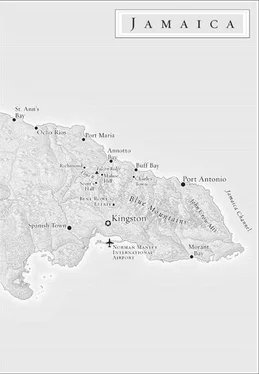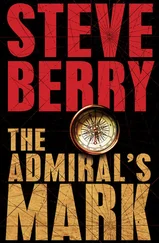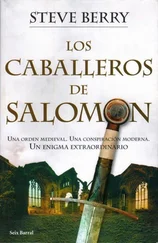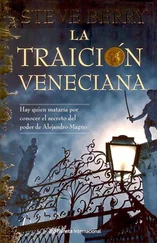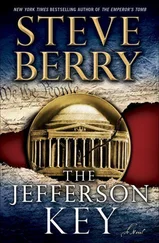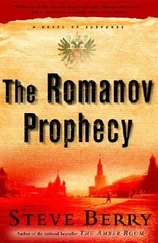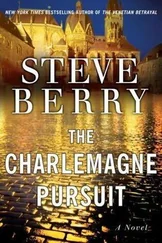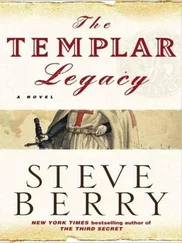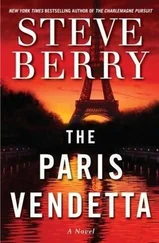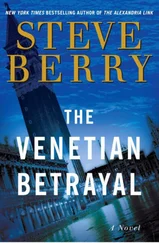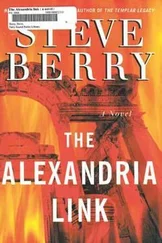Steve Berry - The Columbus Affair - A Novel
Здесь есть возможность читать онлайн «Steve Berry - The Columbus Affair - A Novel» весь текст электронной книги совершенно бесплатно (целиком полную версию без сокращений). В некоторых случаях можно слушать аудио, скачать через торрент в формате fb2 и присутствует краткое содержание. Жанр: Старинная литература, на английском языке. Описание произведения, (предисловие) а так же отзывы посетителей доступны на портале библиотеки ЛибКат.
- Название:The Columbus Affair: A Novel
- Автор:
- Жанр:
- Год:неизвестен
- ISBN:нет данных
- Рейтинг книги:4 / 5. Голосов: 1
-
Избранное:Добавить в избранное
- Отзывы:
-
Ваша оценка:
- 80
- 1
- 2
- 3
- 4
- 5
The Columbus Affair: A Novel: краткое содержание, описание и аннотация
Предлагаем к чтению аннотацию, описание, краткое содержание или предисловие (зависит от того, что написал сам автор книги «The Columbus Affair: A Novel»). Если вы не нашли необходимую информацию о книге — напишите в комментариях, мы постараемся отыскать её.
The Columbus Affair: A Novel — читать онлайн бесплатно полную книгу (весь текст) целиком
Ниже представлен текст книги, разбитый по страницам. Система сохранения места последней прочитанной страницы, позволяет с удобством читать онлайн бесплатно книгу «The Columbus Affair: A Novel», без необходимости каждый раз заново искать на чём Вы остановились. Поставьте закладку, и сможете в любой момент перейти на страницу, на которой закончили чтение.
Интервал:
Закладка:
Cuban bloodhounds were imported from Spain, then brought to Jamaica by the British to combat the Maroons (chapter 3). The chasseurs are accurately described (chapter 10), as is the damage the hounds could inflict.
The locales for this story were particularly noteworthy. All are accurately described. Jamaica is spectacular, its Blue Mountains worth a visit (chapter 3). Thousands of caves dot the island and the ones used herein are hybrids of several (chapters 56, 58, 72–77). A good source from which to learn more is Jamaica Underground , by Alan Fincham. Mount Dora (chapter 17) truly does have the look of New England, and Lake County is aptly named (chapter 23). St. Stephen’s Cathedral in Vienna has catacombs and bone rooms (chapters 34, 36, 37, 39, 41). The gardens at Schönbrunn palace (chapter 42) and the Stadttempel synagogue (chapter 8) are most impressive. Blue Mountain Coffee is regarded as one of the finest in the world (chapters 10, 30) and its regulation by the Jamaican government is accurately depicted, but any involvement by the Rowe family was my invention.
Prague is spectacular (chapters 49–51), its Jewish quarter solemn. The Old-New Synagogue (chapters 47, 49, 59) is faithfully described, including the iron rungs outside that lead up to its loft. Cameras do indeed keep watch throughout. The ceremonial hall, burial society, and Maisel Synagogue (chapters 56, 57, and 64) are there. The Old Cemetery is particularly moving, but an underground room for the disposal of sacred texts is my invention (chapter 54). Kolkovna (chapter 65) is a restaurant just outside the old quarter. Parizska Street is as depicted (chapter 50), crowded with expensive shops, bordering the Old-New Synagogue. Rabbi Loew lived in Prague (chapter 47) and remains a revered hero, his grave is the most visited site in the Old Cemetery (chapter 57). His seat in the Old-New Synagogue stays chained (chapter 59). The legend of the golem is one often told in Prague, but it’s erroneously associated with Rabbi Loew (chapter 47). The tale was created as described in chapter 47. Many, though, still believe that the golem rests in the synagogue’s loft.
Terezín (chapter 53) was a place of horror. The account of what happened to Prague’s Jews, from 1939 to 1945, is accurate (chapter 53). Only Rabbi Berlinger’s presence there is my invention.
Drug dons, unfortunately, thrive in Jamaica (chapters 3, 7). Their popularity with the people exists, as does the government’s inability to combat them. Spanish Town can be an intense place (chapter 14). Jewish cemeteries (chapter 13) are found all across Jamaica, but mine is imaginary (chapters 3, 7). Throughout, Jewish burial customs are accurately depicted (chapter 22).
The Jewish presence on Jamaica, which began at the time of Columbus, is historic fact (chapter 7). Columbus’ daughter-in-law did in fact secure the island from Ferdinand and wrestle away religious control (chapter 7). The Inquisition was kept off Jamaica for 150 years. When the Spanish finally returned in 1650, the Jews there sided with the English and helped expel them. Cromwell did in fact make a deal with them, promising and delivering tolerance (chapter 7). Eventually, Jamaica’s Jews helped build the island’s economy. Their commercial dealings with Maroons are real, as is the curious opposition by the emancipated blacks to Jewish equality (chapter 24). Eventually, the Jewish presence on Jamaica dissipated. Today only a few remain, the oldest congregation in the Western Hemisphere still worshiping in Kingston. On Cuba, Jews lived during Columbus’ time and today (chapters 38, 40). When the Spanish finally fled Jamaica in 1655 they buried both their wealth and their records, thinking they would soon return (chapter 18). That, of course, never happened, and both were lost. The presence of a records repository on Cuba was my invention. The Jamaican archives in Spanish Town is real.
The hooked X, introduced in chapter 10, was actually a symbol found in Minnesota in 1898. What it is, nobody knows. But it is true that a hooked X is contained within some images of Columbus’ strange signature (chapter 15), identical to the symbol found in Minnesota. The Hooked X , by Scott Wolter, is a good source of information on this mystery.
The astrolabe (chapter 66), as described, is my invention, but is based on one from the British Museum, fashioned by a 14th-century Hebrew craftsman. The pitcher is the symbol for a Levite (chapter 7) and can be found on some graves. The biblical history of the Levites, as detailed in chapter 13, is accurate.
What happened to the First and Second Temple is historic fact (chapter 8). Amazingly, just as described in chapter 42, both were destroyed on the same day, 656 years apart. The Temple treasure is indeed gone, its journey from Jerusalem to Rome to Constantinople documented (chapters 8, 29). Where it went after that, nobody knows. The Arch of Titus exists and visually confirms the treasure’s temporary presence in Rome (chapter 77). An excellent resource on this subject is God’s Gold by Sean Kingsley.
The history of Sephardi Jews is a matter of record (chapter 29, 31). Only my addition of their involvement with the Temple treasure is fictional (chapter 63). But their financing of Columbus’ first voyage is factual. All of what Alle Becket says in chapter 31 can be substantiated. Luis de Santangel lived, as did the other financiers mentioned. De Santangel’s close relationship with Ferdinand is fact. And not only do de Santangel’s account books (chapter 31) exist, but those who have studied them state that they corroborate the fact that de Santangel advanced moneys for Columbus’ first voyage.
The Temple Mount, with its history and politics, is accurately related (chapter 55). Jerusalem is, indeed, the world’s most besieged city (chapter 59). A hope for a Third Temple still remains alive in Israel, with or without the Messiah.
At the heart of this story is an assumption: that Christopher Columbus was a Jew. Many have postulated the premise, none more convincingly than Simon Wiesenthal in Sails of Hope . Thousands of Sephardi Jews became conversos to escape persecution. Whether Columbus himself or his parents made that choice is unclear. What is clear is that virtually nothing is known of Columbus. Accounts as to his birth date, birthplace, upbringing, parentage, education, and life radically conflict. No known portrait of him exists. Both the chart he used for navigation (chapter 8) and his original journal, Diario de a bordo, Outward Log , are gone (chapter 15). The so-called Journal of Columbus , cited by nearly everyone as an authentic depiction of his voyages, is an unreliable thirdhand account produced decades later. The Spanish government’s refusal to allow any independent search of its archives for either the chart or the original journal (chapter 8) only compounds the mystery.
Even Columbus’ grave site is a matter of intense argument (chapter 38). My placing it in Jamaica is, of course, fictional (chapter 62). But all that Alle Becket writes in chapter 15 and all that Rabbi Berlinger says about him in chapter 65 is true. That Columbus sailed before midnight on August 2, 1492, and that all Jews had to be gone from Spain by August 3, are facts (chapter 9). Columbus’ possible real name—Christoval Arnoldo de Ysassi—is more speculation. So is the tale, told in chapter 79, of Juan Colón from Majorca. That account is not mine, but was presented as a lecture in 1966 to explain why the Catholic Church had turned a deaf ear to all suggestions that Columbus be made a saint. Interestingly, with regard to Alonso Sanchez de Huelva (chapter 79), there is a great debate as to whether he, not Columbus, was the first European to find the New World. One line of thought says his exploits were lies promulgated by Columbus’ enemies to discredit the Admiral’s accomplishments. Another insists de Huelva never existed. A third says that de Huelva found the New World, but Spain’s Catholic monarchs kept the discovery secret until Alexander VI, a Spaniard, was elected pope in 1492. Then they seized on Columbus’ request for ships and allowed him to rediscover what they already knew existed.
Читать дальшеИнтервал:
Закладка:
Похожие книги на «The Columbus Affair: A Novel»
Представляем Вашему вниманию похожие книги на «The Columbus Affair: A Novel» списком для выбора. Мы отобрали схожую по названию и смыслу литературу в надежде предоставить читателям больше вариантов отыскать новые, интересные, ещё непрочитанные произведения.
Обсуждение, отзывы о книге «The Columbus Affair: A Novel» и просто собственные мнения читателей. Оставьте ваши комментарии, напишите, что Вы думаете о произведении, его смысле или главных героях. Укажите что конкретно понравилось, а что нет, и почему Вы так считаете.
